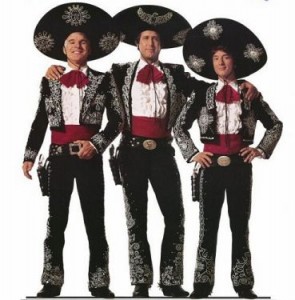 Welcome to the 55th edition of The Three Things, the weekly update of three links, podcasts, videos, or books you can’t miss. We’ve been doing this for over a year now, and have a new weekly contributor to introduce you to.
Welcome to the 55th edition of The Three Things, the weekly update of three links, podcasts, videos, or books you can’t miss. We’ve been doing this for over a year now, and have a new weekly contributor to introduce you to.
Welcome Joe Cardillo, a smarty-pants friend of Spin Sucks who works for Visual.ly in project & business development. So, this week, we bring you three things from Joe Cardillo, Howie Goldfarb (Blue Star Strategic Marketing), and yours truly.
For those of you new to this series, The Three Things arrives in your inbox on Sunday mornings (unless you don’t subscribe, but that can easily be fixed if you hurry over and enter your email address or add to your RSS feed) so you have some extra time to spend perusing the obscure content we’ve curated for you (and one another) before your week begins and deadlines, meetings, and work takes over.
Today, we explore the brain’s process for decision making, who the rich people are, and why they aren’t on social media (marketers, take note!), and we look at the United States’ largest mass grave, where unclaimed bodies – including infants – are buried in unmarked plots.
New Study Decodes Brain’s Process for Decision Making
Joe on Decision Making. I almost went with this article on anonymous commenting on the web, but at the last moment saw an intriguing study that found we relate more to specific memories than our general framework or template for understanding the world.
In other words, even though our brains conglomerate and assimilate meaning out of a ton of different experiences, when we make decisions we are often running the specific situation against all of our memories that might be related. So our experience with a red car, for example, might play into our decision making in the future for another red colored vehicle, even if there is no obviously logical or rational connection.
“By storing concrete traces of our experiences, we can make decisions about different types of cars and even specific past experiences in our life with the same memories.”
It’s a pretty interesting idea, and speaks a lot to why we respond so much to storytelling, and probably also why heavily quantitative minds sometimes have a blind spot in that area.
Accessing Affluencer’s Influence
Howie on Social Media Styles and One Amazing Insight. Normally I see flawed studies and I go aggro, taking the authors to task for not being objective or purposefully steering the study in their favor. But Media Post’s Center for Media Research (free to subscribe) is chock full of insights and anyone in any marketing related career should subscribe. Forget that I am not an ‘affluencer’. Just looking at age group I found the social media use by Millennals, Gen-X (that’s me!) and the Boomers interesting.
I am most certainly a curator and sharer but I am not a very active content creator. My mother is certainly someone who logs into Facebook to be a voyeur. She rarely shares, likes or comments, but will then share what she sees the old fashioned gossipy way in person, phone, email. How do you use social media, and do you fit your age type? The BIG BIG BIG Insight that is in the study but not discussed? For people of means an amazing 43% of Millennials, 55% of Gen-Xers, and a whopping 63% of Boomers don’t use social media daily! Seems unless you are a vanity driven celeb or sports star, most people with normal careers who are wealthy don’t care about Facebook, Twitter, or your weak Instagram photos.
The Largest Mass Grave Site in the U.S.
Lindsay on Paupers’ Graves. Hart Island is a half-mile blip of land at the mouth of Long Island Sound. You can see it on Google Maps, which is a little weird, because it’s so close to New York City, and it’s the United States’ largest mass grave. When I first saw the article headline, I assumed it had something to do with “coffin ships” and the early days of immigration. But no. Hart Island is known as a potter’s field, a common gravesite for the city’s unknown dead. Some 900,000 New Yorkers (or adopted New Yorkers) are buried there; and hauntingly, the majority are interred by prisoners from Riker’s Island, who earn 50 cents an hour digging grave sites and stacking simple wooden boxes in groups of 150 adults and 1,000 infants. That’s just crazy.
Hart Island has been closed to the public since 1976 – and people actually have to apply to visit their dead family members, on the last Thursday of every month. And by visit, I mean not see specific graves, rather mass burial plots – illustrative of the enormity of homelessness and/or the insane number of unclaimed bodies being sent for unmarked burial by a team of prisoners. As one writer notes: “Hart’s Island should be memorialized, as New York City’s family tomb.” It’s hard to fathom the agony of trying to find your lost loved one, with no markers, and most likely buried with many others.
Now it’s your turn. Is there a book, podcast, article, TV show, blog post, or story we should read?